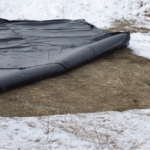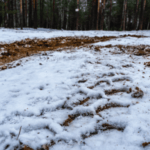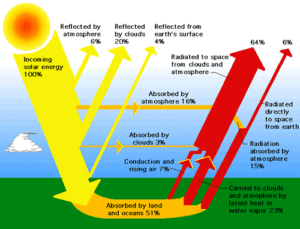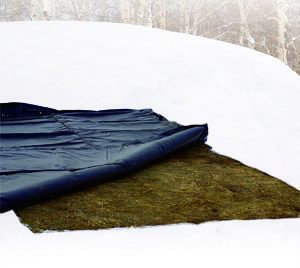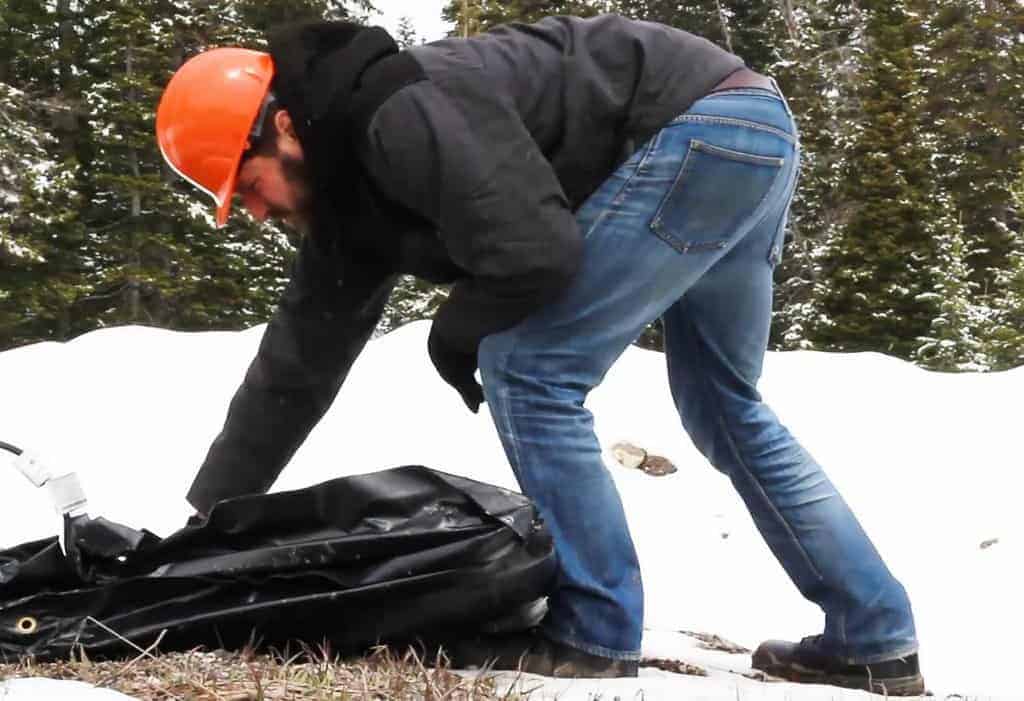If you work professionally digging graves, you know it is labor-intensive work. This is even more true if you live in an area where winter makes its mighty presence known. Winter adds an extra layer of difficulty to any grave digging project, not to mention the extra layer of ice and snow that accompanies it. Learn how to best deal with these less-than-ideal circumstances.
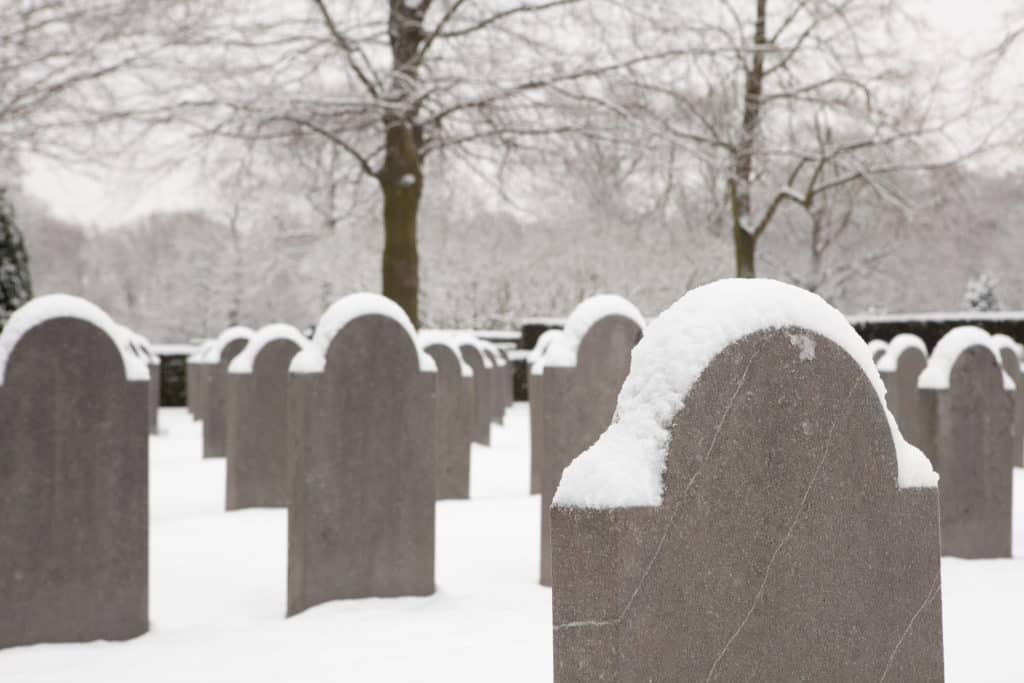
How does grave digging become more difficult in winter due to frozen ground?
- The job takes more time: If you’re lucky, the frozen ground will only add an extra couple of hours onto your digging project. In reality, it can often take an extra day or two to accomplish the same dig as it would in the summer months. Because of the extended time, you and your team may well experience lengthened work days, more exposure to the elements, and increased frustration. Not to mention getting behind on the work that must be done on projects that may begin to pile up.
- Increased Safety Hazards: When working in freezing conditions, cemetery workers and burial ground custodians are at a heightened risk. As mentioned, you’re likely working long hours in the harsh cold, which can lead to cold stress problems including hypothermia and frostbite.Without proper ground preparation, workers may try to “muscle” the frozen ground into cooperation with shovels. This can easily lead to injuries that can put them out of commission for quite a while.This is also true of shoveling large amounts of snow from a dig site in order to prepare the ground for the burial site, which has been shown to put a lot of strain on individuals who are susceptible to experiencing heart attacks. While those in the grave preparation field are probably pretty used to working with a shovel in hand, it is still wise to be aware of putting too much strain on the body when shoveling, and winter is the time that this increase in risk takes place.
- Tools Break More Easily: Tools should always be inspected before use, no matter what time of the year it may be. However, this is especially true in the winter months. Simply put, this is because the tools will experience more strain as they fight to penetrate the frozen ground. When a tool breaks unexpectedly, it can potentially harm the person digging. It also stalls the project while a replacement is purchased.Whether it’s your shovel, backhoe, shoring tools, protective gear, or ground heating solutions, never begin a job without thoroughly inspecting your tools to make sure they are up to the task at hand.
Frozen ground in winter conditions does not only affect those who are actually digging the grave site. Consider this:
In the past, many graves simply could not be dug due to frozen ground. While the technologies today have lessened this issue greatly, the difficulty of digging in adverse weather conditions still exists in some areas of the country, particularly in the northern states. For example, in North Dakota, the ground can freeze so remarkably that digging simply cannot take place with traditional methods. The work is paused for the entire winter! Yikes.
While this is a pain for the workers, it is nothing like the agony experienced by those who have to wait to bury their dead for a few weeks, if not a few months. In these situations, the deceased body is placed in a refrigeration unit to preserve it. This reality would mean a family would not be able to find closure after a loved one’s passing because the process would be re-lived a second time. What a terrible prospect for any grieving family!
One such story, called “Where Death Comes in Winter, Burial Comes in Spring,” was explained in the NY Times several years ago, which told of a 4-year-old boy who had passed away. If this horror is not enough for any parent to face, the experience was amplified by the fact that the parents could not put him to rest until a month after his passing due to frozen ground. His mother said “Everybody was a disaster – It brought it all back fresh. It was horrible.”
No cemetery wants those who come with a deceased loved one to experience that type of misery. Thankfully, many cemeteries in the United States do not deal with circumstances that are quite as intense as these, but the reality of digging for a casket in frozen ground is difficult nonetheless.
Those who work in a cemetery preparing graves know that it is incredibly important to stay on schedule in order to get the job in a timely manner. This act of service allows the funeral and burial to go as smoothly as possible, aiding the family in its need for peace. Not even frozen ground can get in the way of something like that.
In order to avoid possible circumstances like those mentioned above, grave digging teams often need to use more tools in the winter than in the summer. Here are some helpful winter tools to keep your digging project running nicely, even in the intense cold.
How to Dig a Grave In Frozen Ground
- Jackhammer: Perhaps you have used a jackhammer on an icy dig and found it helps as you work to get through that solid layer of ice at the site. Many cemeteries opt to outline the burial site and then drill across the ground. This helps to break up the ground, which will then be easier to dig with a backhoe rather than a single sheet of frozen soil.
- Frost Teeth: Another extra helper during the frigid winter months is called “Frost Teeth.” These babies really do look like large fangs and are attached to the end of the backhoe’s bucket. The “teeth” aid the backhoe in getting through the difficult top layers of frost and icy ground. It is then easier to excavate after that point.
- Grave Burner/Frost Thawer: Another method is using propane in burner units that can heat up the ground. This method involves taking a large stove to the burial site and cooking the ground. This method will take several hours.
- Ground Thawing Blankets: One of the latest technologies to arrive at burial preparation sites is heated blankets meant specifically for thawing out the frost, snow, and ice. Many grave digging teams now choose to utilize ground thawing blankets to drastically lessen the headache and time it takes to begin a winter dig for a future casket.
These blankets are designed specifically to thaw out the ground within hours, with little effort on the part of those digging. This safe, reliable option has become quite popular in recent years, as it saves a lot of money in hours that would have been spent trying to cut through frozen ground by workers. Simply place the blanket on the ground several hours the dig, and the site will be ready and when you are.
At Powerblanket, we highly recommend checking out our ground thawing blankets as the solution to your winter digging problems. Here are some of the things you can expect from our quality product line.
- High Watt Density Thaws Frozen Ground Fast.
- Quickly Removes Frost Prior to Digging
- Melt Snow and Ice From Ground Prior to Digging
- Easily Installed and Removed
- Easily Transportable
- Safe and Certified to National Safety Standards
- No-Mess Heating with Little Preparation Required
Powerblanket’s Ground Thawing Blankets were essential in saving the Hailey Cemetery time and money during the Idaho Winter of 2017. Wayne Burke, maintenance supervisor for the cemetery, said that winter was colder and less wet than previous years, which caused the soil to freeze much deeper than normal.
“There’s usually six inches of snow on the ground,” Burke said, adding that the snow acts as a layer of insulation, preventing the ground from freezing as much. “It always worked out great. But last year it got really cold and there was no snow.”
Burke knew he needed solutions fast to meet the demand of the cemetery’s burial service schedule. He reached out to Powerblanket, and within just two days of ordering, he received his game-changing Ground Thawing Blanket.
“You guys sent it just in time. I used it the first day, and only had it on for 12 hours. It still worked,” he said. “A few weeks later, I needed it again. We also loaned it to another cemetery, and they were really happy with how it worked too.”
Burke explained that in his years before discovering Powerblanket, he had used propane torches to thaw the frozen soil before digging. In addition, the cemetery landscaping had to be torn up and replaced after each dig.
But with his Ground Thawing Blanket, he was able to avoid this hassle.
“It worked perfect,” he said. “It thawed about 14 inches down into the ground. The grass greened up and I was able to cut it up into strips and roll it up. The sod was in good shape and I stored it in our garage. After the burial, we put the dirt back in and rolled the sod back out. Normally, we tear the sod up and throw it away and replant in the springtime.”
Burke said the Ground Thawing Blanket was exactly what he needed to break through the tough winter soil, saving him hours of manual labor and nearly $100 in landscaping costs.
“I was really happy with it, and we’ll be using it again this year,” he said.
Burke knew that his traditional methods were just not going to cut it (the ground, that is) in such a cold winter. As he mentioned, the ground tends to freeze even more with no protection of a layer of snow. He knew it was time to consider other methods, and after doing his research, he found that Powerblanket’s offerings were the best fit to keep his burial projects right on schedule.
We were happy to be the solution to his problem!
Another one of our recent customers had this to say about our ground thawing blankets:
Your blankets are absolutely excellent. Thanks to Powerblanket, we were able to quickly thaw the ground and complete our job. In fact, we estimate a savings of 10 hours per site, equaling a savings of $5,000 already. Calculating this into our thousands of sites, the savings are huge! We are excited about the time and money Powerblanket has saved us and look forward to future savings.
It’s these stories we absolutely love to hear from our customers. We love knowing that we are helping them get the job done as easily as possible in every way!
Of course, our ground thawing solutions have many applications in addition to digging graves in a cemetery setting. Here are some examples of other settings where our ground blankets have a big, positive impact on the job: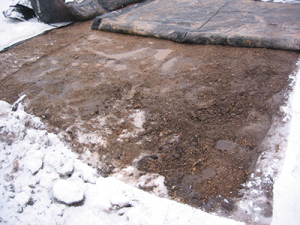
- Prepping Frozen Ground for Pouring Concrete
- Curing Poured Concrete in Winter (Which Prevents Weakened Concrete)
- Melting Snow Off Walkways to Ensure Customer Safety
- Keeping Construction Sites Safer for the Crew
- Heating Residential Doorway and Driveways to Increase Safety
Wonder if our heating solutions are the right fit for your company or situation? Give us a call. Our friendly staff here at Powerblanket is knowledgeable about all possible applications of these heating blankets. We are ready to answer any questions you may have, whether you are in the grave digging field or another line of work (such as other types of construction) that require ground thawing methods.
Reach out to us today, and we will get you on your way to a better experience with each of your winter projects. Contact us at 801.506.0198 today.
Frequently Asked Questions
How do you dig a grave step by step?
To dig a grave step by step, plan the site, gather necessary tools like shovels and ground thawing blankets, prepare the site by clearing snow and debris, and dig in layers, using specialized equipment for frozen ground if needed.
Why is digging up graves illegal?
Digging up graves is illegal because it desecrates sacred sites and violates laws protecting the dignity and sanctity of the deceased.
How deep should a grave be dug?
A grave should typically be dug at least 6 feet deep to ensure safety, prevent body theft, and adhere to traditional burial practices.
How much does it cost to dig up a grave and move it?
The cost to dig up and move a grave can range from $8,000 to $20,000, including expenses for transportation, a new casket, and a new headstone.
Time is money. Don't waste time waiting for the ground to thaw. Powerblanket has you covered.


